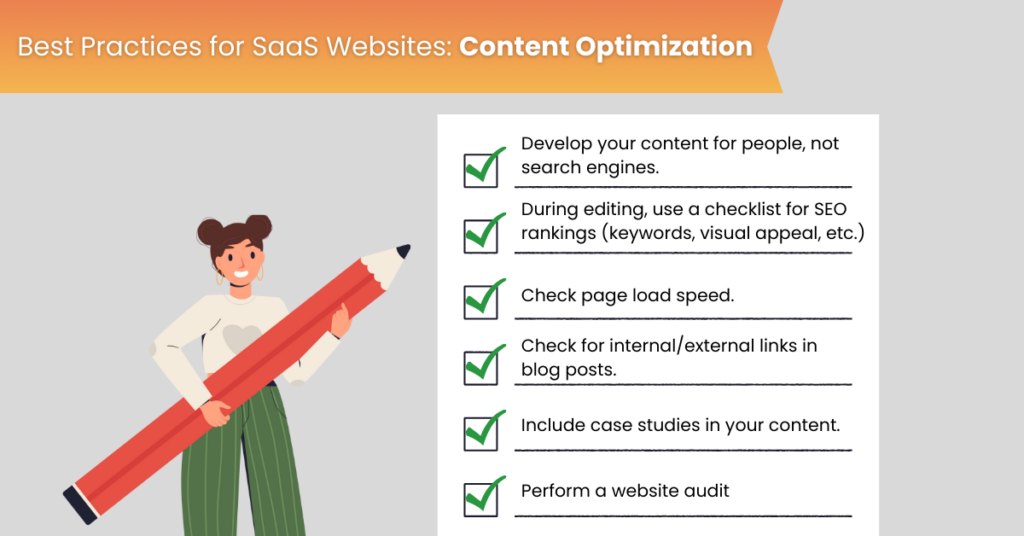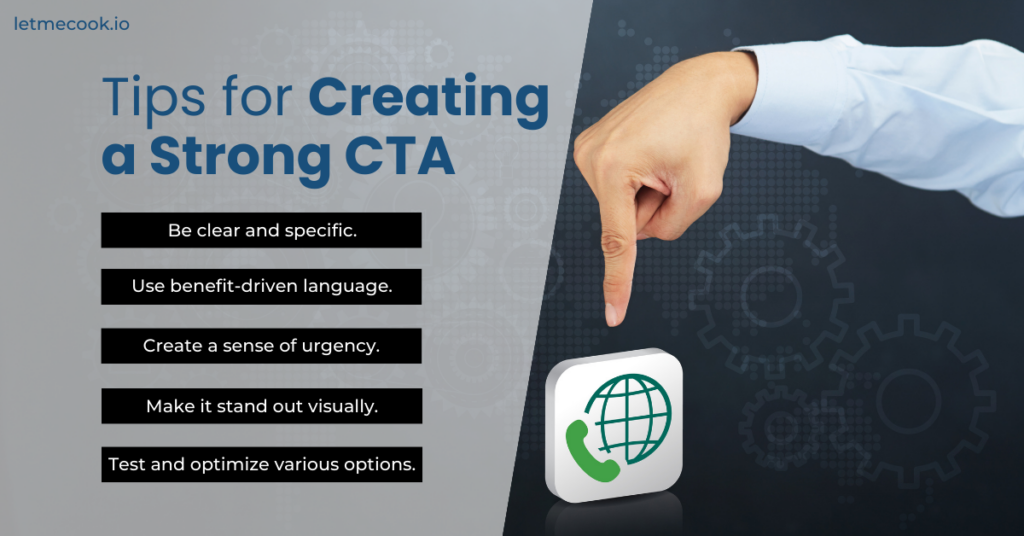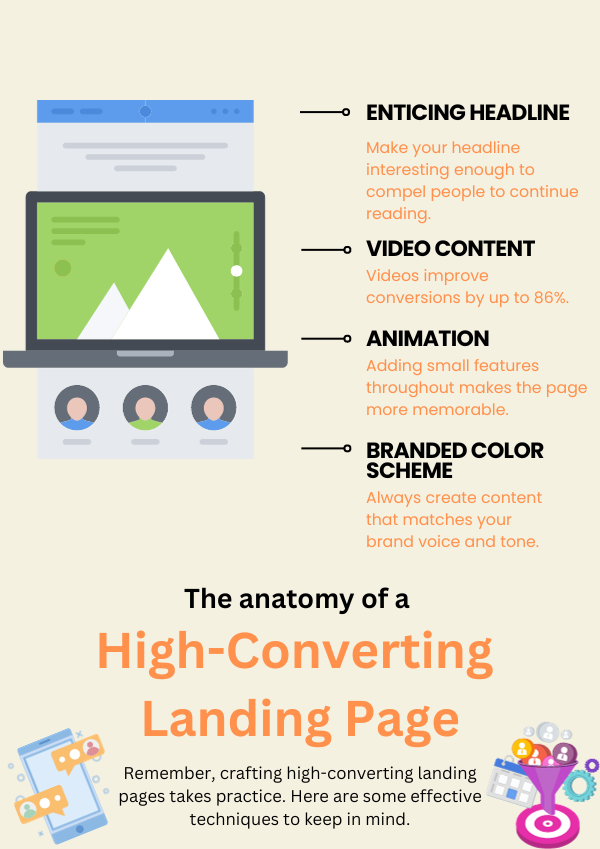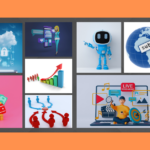This article contains affiliate links – but that doesn’t mean this piece is an ad.
All content is our honest take on the service/product and incorporates our
real thoughts and experience using it.
Do you know what your website is? It’s a hub for your entire enterprise. It’s your first impression. It’s your USP. It’s the pinnacle of your marketing and sales efforts.
Your website isn’t just a digital storefront; it’s a vital touchpoint in the customer’s journey. But simply having a website isn’t enough. More than 20% of business owners say they have low website traffic. In the SaaS world, that could mean death.
It’s equally important that your site is optimized to meet your customer’s needs while also achieving your business goals.
Let’s explore some of the best practices for SaaS websites. They can help you stand out in a crowded market, improve user experience, and drive more conversions.
Table of Contents
1. Prioritize User Experience (UX)
User experience is the driving force behind any SaaS (Software as a Service) website’s success. It has revolutionized how businesses operate.
With technology continually advancing, you should prioritize user experience to ensure customer satisfaction.
The best practices for SaaS websites involve creating a responsive and intuitive interface. It offers an enjoyable experience for customers.
Prioritize user experience to gain customer loyalty and improve usability. Suddenly, addressing user needs becomes a breeze.
You’re instantly creating a positive impression and fostering trust. And all you’ve done is design a website that focuses on making it easier for a customer to buy your product.
That’s why UX has the top spot when it comes to best practices for SaaS websites. It’s one of the easiest ways to cater to the customer’s needs and your bottom line.
2. B2B SaaS Website Best Practices and Your Unique Selling Proposition
When it comes to B2B SaaS website best practices, it’s important to define and live by your unique selling proposition. You have to feel it in your bones. Believe in it.
Because if you don’t, then why should your customer?
Your proposition is what sets you apart from everyone else in the market and showcases the benefits your service provides.
You want to answer the question, “Why should I use your product?” in a clear and concise way.
Once you understand your value proposition, you should assist your entire team in knowing the value you bring to the table. This is going to be everyone from marking to product development.
Consistently communicating and living by your unique value proposition builds a brand that resonates with your target market.
3. SaaS Content Optimization – Implement an Effective Strategy

SaaS content optimization is the cornerstone of any website. Without content, Google and users alike will never find you.
It is a powerful tool to educate potential customers. You can write blog posts. Have YouTube tutorials showing all the neat things they can do with your product. Provide case studies showing other people finding success thanks to your service.
You will establish yourself as an authority in the industry. People want to buy from an authority.
When was the last time you ordered something online from a website that was almost as good as Amazon? They didn’t have the sneakers you wanted, so you had to get some knockoffs. But hey, you saved $10.
That doesn’t happen. People know what they want. They know they can get it at Amazon. So it’s the first place they go to search.
Why can’t you be that for SaaS? Maybe no one knows your name right now. That’s OK. The right SaaS content optimization plan can get you there.
Google VS. People
Some people think you should hone your content to make search engines happy. If they crawl your site and like it, then you’ll show up in the SERPs and get organic traffic.
That’s really not the best way to look at it. In fact, the G-men will punish you for doing it. They released the helpful content update in two parts in 2022, which specifically went after websites that designed their content for search engines and not users.
Develop your content for people. They’re the ones who pay your bills. When was the last time Google sent you a check to keep the lights on?
However, there are things you can do to make both parties like you.
Pro-Tip: Make your content however you want it. During the editing process, go down a checklist to make sure you’re hitting all the right boxes that will help search engine rankings.
- Am I hitting my keywords?
- Is the content visually appealing?
- Does the page load quickly?
- If this is a blog post, did I include stats/external links as well as internal links?
These are a few examples of how you can optimize your content for everyone.
Optimize – SaaS Website Audit – Optimize Again
At LMC, we love content. We can talk about it all day, every day. And sometimes we do.
But even we have to admit that content isn’t everything. It’s a lot. But not all. As you start to optimize your website, you may start thinking to yourself, “What else can I optimize?”
We’re glad you asked.
You also need to optimize other elements of your website, such as page titles, meta descriptions, and URLs.
After you’ve done so much that you can’t stomach to hear or read the word ever again, it’s time to perform a SaaS website audit. It’s so important to your website we wrote an entire post on it.
Once your audit is complete, it’s time to optimize again. While you don’t have to do this process all the time, it’s a good idea to audit and reoptimize a couple of times a year.
4. Utilize Calls to Action (CTAs)

A call to action (CTA) is a crucial element of any website that drives users toward taking a specific action.
This can be signing up for a free trial (what SaaS customer doesn’t love these?) or subscribing to a newsletter.
A well-placed and compelling CTA can significantly increase conversions on your website. Make sure to use clear and concise language, a contrasting color, and place the CTA in a strategic location that is easily visible to users.
Pro-Tip: Google doesn’t want you annoying website visitors. Stay away from landing pages that are one giant pop-up and take up the whole screen. They take forever to load and can increase your bounce rate. Search engines will see these factors and lower your rankings.
5. Focus on Security
You likely put in a lot of time and effort to make your software safe for users. You tell them what you do with your data. You test your code to make sure it can’t be breached. You go the extra mile for the safety of users and the business.
Take the same road with your website.
A secure website is crucial in building trust with potential customers. Make sure to use SSL encryption and regularly update your security measures/themes/plugins.
An SSL certificate usually comes stock with any major hosting platform. Renew it every year.
You also want to ensure your site complies with laws and regulations. GDPR is one example, but there are some others.
6. Incorporate Social Proof
Social proof refers to how other people’s actions influence our decision-making. Users are more likely to buy a product with positive reviews and testimonials from real people.
Incorporate social proof on your website. Display customer testimonials, case studies, and user ratings/reviews. This can help build credibility and trust with potential customers.
7. Offer a Seamless Onboarding Process
First impressions matter, and this rings especially true for SaaS websites.
When a user signs up for your software, have a seamless onboarding process. It should guide them through the steps of getting started with your product.
Onboarding can include tutorials, guides, and helpful prompts to make getting started a breeze. The easier it is to use, the more people will want to spend money on it.
Pro-Tip: Offer Clear Pricing and Packages. The pricing structure of your products and packages should be clear and concise information. It helps users make informed decisions and reduces the chances of confusion or frustration.
8. Craft High-Converting Landing Pages

Crafting high-converting landing pages for your SaaS website takes a lot of careful thought and experimentation.
The goal is to create a seamless experience for the visitor, leading them smoothly down the funnel toward a conversion. To figure out what makes a landing page smooth and seamless, we recommend you check out our post on A/B testing.
Make it clear within the first few seconds what your product does and how it solves a pain point for your target audience. Design with simplicity in mind, avoiding clutter and focusing on the most important elements.
9. Leverage Email Marketing
Email marketing is a powerful tool for SaaS companies. It’s crucial to incorporate it into your overall digital marketing strategy.
Your business is online. Most traditional marketing methods won’t work for you. Email should be a staple in your growth campaigns.
Emails do it all. You can use them to nurture leads, promote new products or features, and keep in touch with customers. You get constant touch points to get them, make a sale, and follow up to keep them happy.
Make sure to segment your email list based on user behavior and interests for more targeted and effective campaigns.
10. Continuously Test and Improve Your Website
The best way to meet your target audience’s needs and expectations is to test and improve it continuously.
You should do extensive testing on website elements like CTAs, page layouts, or even entire landing pages. Gather data and analyze user behavior. Combining these two processes allows you to make informed decisions on improving your website.
You should constantly monitor all of your analytics. We cannot stress enough how important it is to make data-driven decisions in this industry.
By understanding how users interact with your website, you can continuously optimize it. Having this information will lead to better performance and ultimately drive more conversions.
Regularly review your content strategy with a content audit, SEO efforts, and other elements of your website to ensure they align with your business goals.
11. Provide Exceptional Customer Support
Lastly, providing exceptional customer support maintains happy and loyal customers.
You want to have multiple channels for users to reach out for help. We’re talking email, live chat, or a dedicated phone line.
Consider implementing self-help resources such as FAQs or a knowledge base to empower users to find their own answers.
Provide top-notch customer support to build trust and loyalty. It leads to higher retention rates and potential referrals.
Best Practices For SaaS Websites: What’s Next?
Creating a successful startup involves a myriad of best practices for SaaS websites. Each of the B2B SaaS website best practices uniquely contributes towards a robust digital presence.
You can enhance visibility and drive conversions by establishing your site as a resource hub and optimizing for SEO. Saas content optimization and a SaaS website audit further solidify your company as an authority in the eyes of search engines and customers.
Incorporating social proof, ensuring a seamless onboarding process, and providing clear pricing details are vital in instilling confidence in potential customers.
Strategic email marketing and exceptional customer support all work synergistically to enhance user experience and foster customer loyalty.
By leveraging these practices, you can create a SaaS website that exceeds customer expectations and drives your business toward success.





Thank you for your sharing. I am worried that I lack creative ideas. It is your article that makes me full of hope. Thank you. But, I have a question, can you help me?
It is our pleasure, glad to hear that you our articles are giving you hope! And we are always happy to help, you can get in touch with us via email at maddy@techtonic-marketing.com and we will do our best to assist you.
Your point of view caught my eye and was very interesting. Thanks. I have a question for you.
We are glad to hear you found this blog post interesting. You can reach out to maddy@techtonic-marketing.com for any questions you may have.
Your article helped me a lot, is there any more related content? Thanks!
Happy to hear that! You may also want to see our articles on technical SEO, off-page SEO, and on-page SEO for SaaS.